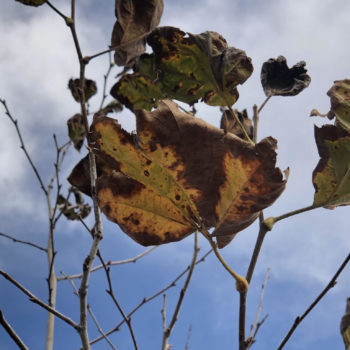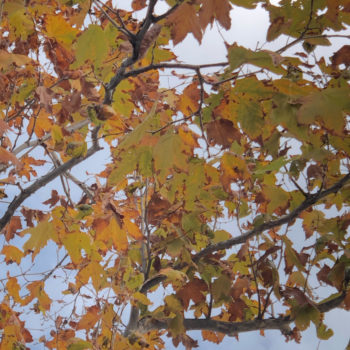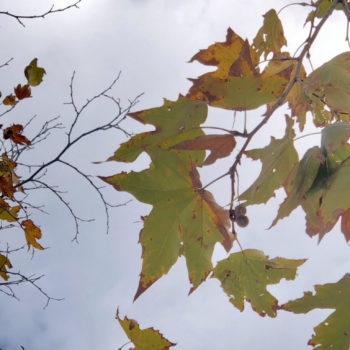The summer heat may still be with us but fall threats are on their way. Now is the time to protect your trees from that reliable annoyance: anthracnose.
What is Anthracnose?
Anthracnose is not actually a single disease but a name for a group of fungal diseases that attack trees in similar ways. In our region, the species most affected are sycamore and elm. In fact, it’s difficult to find a sycamore in San Diego that hasn’t been infected by this pernicious disease.
Damage
Anthracnose starts by attacking young shoots and new leaves, creating yellow and brown spots that grow into large splotches, and eventually kills the leaves.

Because defoliation is the main symptom of anthracnose, the fungus’ initial impact is on the attractiveness of the tree. A canopy that should be lush and full becomes bare and skeletal as affected twigs and branches die or are trimmed away. If left untreated, the tree’s ability to photosynthesize diminishes and the tree may eventually starve to death.

Spread
Anthracnose thrives on and is easily spread by moist conditions. It can even live in tree debris and be spread by watering. Chances are that if one tree on a property has it, many more do too.
Fall rains present a perfect opportunity for infection but the season is also an ideal time to treat. Anthracnose can’t be cured but it can be prevented and managed.
Prevention
- When selecting new or replacement trees, talk to your arborist about which species are best suited to each planting location
- Make sure trees are planted in well-draining soil and do not overwater
- If nearby trees are affected, have a tree care company perform preventative treatments on vulnerable trees
Treatment
- Develop a plan with your arborist to manage infected trees that works with your goals and budget for the property
- Schedule your tree care company to trim out infected wood and make sure infected tree debris is destroyed to prevent the disease from spreading to healthy trees
- Ask your tree care company to perform plant health care treatments on infected and vulnerable trees
If you think you may have anthracnose on your property, talk to an arborist right away.


